#Langen Two-Stroke
Text
Top 10 Two Stroke Motorcycles Ever Built
youtube
#Kawasaki#Kawasaki H2 Mach lV#Yamaha#Yamaha YZ250#Honda#Honda CR500R#Suzuki#Suzuki RGV250#Yamaha RD500LC#Suzuki RG500#Honda NSR250#Bimota#Bimota V Due Evolution#Suter#Suter MMX 500#Langen#Langen Two-Stroke#Top 10 Two-Stroke Motorcycles#Two-Stroke Motorcycles#BEST TWO-STROKE MOTORCYCLES#Motor Two-Stroke#Youtube
0 notes
Text

Langen Motorcycles.
250cc Two Stroke.
45 notes
·
View notes
Photo

The Langen: A Street-Legal 250cc Two-Stroke Sports Bike by @langenmotorcycles! Powered by a 76-bhp V-twin that passes modern emissions standards due to direct oil injection to each crank bearing. TIG-welded 7020T6 tubular spaceframe — bike weighs just 265 pounds wet! Press rider: “The chassis is nothing short of miraculous. In fact, the whole package is a triumph of handling prowess – it’s simply perfect.” 100 Langen Two Strokes are being built, each tailor-fit to the owner’s size, weight, riding style, and taste. Full story / interview with founder Chris Ratcliffe today on BikeBound.com. ⚡️Link in Bio⚡️ https://instagr.am/p/Ce5vUtiOZpd/
134 notes
·
View notes
Text


Langen Motorcycle
250cc Two Stroke.
Limited edition of 💯
Langen’s Two Stroke comes with a 249cc 90-degree V-Twin Cylinder two stroke engine, which produces 76 horsepower. It also produces a further 45Nm of torque and has a power band of 9500rpm to 11,700rpm. The motorcycle weighs a total of 120kg and has carbon fibre bodywork and a carbon fibre fuel tank.
Langen was founded back in 2018 by niche motorbike designer, Christofer Ratcliffe.
Wow!
You can smell it and hear it from here.
#langenmotorcycles #wedothingsdifferentlyhere #twostroke #twostrokes #twostrokepower #whatisaw #250cc #vtwin #limitededitionmotorcycles #limitededition #notforeveryone #christofer #christoferRatcliffe #langen #madeinmanchester #nichemotors #niche #designermotorcycles #betyouwantone #2stroke #2strokes #2strokesonly
2 notes
·
View notes
Text
History of vehicles in the world
The very first self-powered road vehicles were powered by steam engines, and by that definition, Nicolas Joseph Cugnot of France built the first automobile in 1769 — recognized by the British Royal Automobile Club and the Automobile Club de France as being the first. So why do so many history books say that the automobile was invented by either Gottlieb Daimler or Karl Benz? It is because both Daimler and Benz invented highly successful and practical gasoline-powered vehicles that ushered in the age of modern automobiles. Daimler and Benz invented cars that looked and worked like the cars we use today. However, it is unfair to say that either man invented "the" automobile.
Internal Combustion Engine: The Heart of the Automobile
An internal combustion engine is an engine that uses the explosive combustion of fuel to push a piston within a cylinder — the piston's movement turns a crankshaft that then turns the car wheels via a chain or a drive shaft. The different types of fuel commonly used for car combustion engines are gasoline (or petrol), diesel, and kerosene.
A brief outline of the history of the internal combustion engine includes the following highlights:
1680 - Dutch physicist, Christian Huygens designed (but never built) an internal combustion engine that was to be fueled with gunpowder.
1807 - Francois Isaac de Rivaz of Switzerland invented an internal combustion engine that used a mixture of hydrogen and oxygen for fuel. Rivaz designed a car for his engine — the first internal combustion powered automobile. However, his was a very unsuccessful design.
1824 - English engineer, Samuel Brown adapted an old Newcomen steam engine to burn gas, and he used it to briefly power a vehicle up Shooter's Hill in London.
1858 - Belgian-born engineer, Jean Joseph Étienne Lenoir invented and patented (1860) a double-acting, electric spark-ignition internal combustion engine fueled by coal gas. In 1863, Lenoir attached an improved engine (using petroleum and a primitive carburetor) to a three-wheeled wagon that managed to complete a historic fifty-mile road trip.
1862 - Alphonse Beau de Rochas, a French civil engineer, patented but did not build a four-stroke engine (French patent #52,593, January 16, 1862).
1864 - Austrian engineer, Siegfried Marcus, built a one-cylinder engine with a crude carburetor and attached his engine to a cart for a rocky 500-foot drive. Several years later, Marcus designed a vehicle that briefly ran at 10 mph, which a few historians have considered as the forerunner of the modern automobile by being the world's first gasoline-powered vehicle (however, read conflicting notes below).
1873 - George Brayton, an American engineer, developed an unsuccessful two-stroke kerosene engine (it used two external pumping cylinders). However, it was considered the first safe and practical oil engine.
1866 - German engineers, Eugen Langen, and Nicolaus August Otto improved on Lenoir's and de Rochas' designs and invented a more efficient gas engine.
1876 - Nicolaus August Otto invented and later patented a successful four-stroke engine, known as the "Otto cycle".
1876 - The first successful two-stroke engine was invented by Sir Dougald Clerk.
1883 - French engineer, Edouard Delamare-Debouteville, built a single-cylinder four-stroke engine that ran on stove gas. It is not certain if he did indeed build a car, however, Delamare-Debouteville's designs were very advanced for the time — ahead of both Daimler and Benz in some ways at least on paper.
1885 - Gottlieb Daimler invented what is often recognized as the prototype of the modern gas engine — with a vertical cylinder, and with gasoline injected through a carburetor (patented in 1887). Daimler first built a two-wheeled vehicle the "Reitwagen" (Riding Carriage) with this engine and a year later built the world's first four-wheeled motor vehicle.
1886 - On January 29, Karl Benz received the first patent (DRP No. 37435) for a gas-fueled car.
1889 - Daimler built an improved four-stroke engine with mushroom-shaped valves and two V-slant cylinders.
1890 - Wilhelm Maybach built the first four-cylinder, four-stroke engine.
Engine design and car design were integral activities, almost all of the engine designers mentioned above also designed cars, and a few went on to become major manufacturers of automobiles. All of these inventors and more made notable improvements in the evolution of the internal combustion vehicles.
The Importance of Nicolaus Otto
One of the most important landmarks in engine design comes from Nicolaus August Otto who in 1876 invented an effective gas motor engine. Otto built the first practical four-stroke internal combustion engine called the "Otto Cycle Engine," and as soon as he had completed his engine, he built it into a motorcycle. Otto's contributions were very historically significant, it was his four-stroke engine that was universally adopted for all liquid-fueled automobiles going forward.
Karl Benz
In 1885, German mechanical engineer, Karl Benz designed and built the world's first practical automobile to be powered by an internal-combustion engine. On January 29, 1886, Benz received the first patent (DRP No. 37435) for a gas-fueled car. It was a three-wheeler; Benz built his first four-wheeled car in 1891. Benz & Cie., the company started by the inventor, became the world's largest manufacturer of automobiles by 1900. Benz was the first inventor to integrate an internal combustion engine with a chassis - designing both together.
Gottlieb Daimler
In 1885, Gottlieb Daimler (together with his design partner Wilhelm Maybach) took Otto's internal combustion engine a step further and patented what is generally recognized as the prototype of the modern gas engine. Daimler's connection to Otto was a direct one; Daimler worked as technical director of Deutz Gasmotorenfabrik, which Nikolaus Otto co-owned in 1872. There is some controversy as to who built the first motorcycle, Otto or Daimler.
The 1885 Daimler-Maybach engine was small, lightweight, fast, used a gasoline-injected carburetor, and had a vertical cylinder. The size, speed, and efficiency of the engine allowed for a revolution in car design. On March 8, 1886, Daimler took a stagecoach and adapted it to hold his engine, thereby designing the world's first four-wheeled automobile. Daimler is considered the first inventor to have invented a practical internal-combustion engine.
In 1889, Daimler invented a V-slanted two cylinder, four-stroke engine with mushroom-shaped valves. Just like Otto's 1876 engine, Daimler's new engine set the basis for all car engines going forward. Also in 1889, Daimler and Maybach built their first automobile from the ground up, they did not adapt another purpose vehicle as they had always been done previously. The new Daimler automobile had a four-speed transmission and obtained speeds of 10 mph.
Daimler founded the Daimler Motoren-Gesellschaft in 1890 to manufacture his designs. Eleven years later, Wilhelm Maybach designed the Mercedes automobile.
If Siegfried Marcus built his second car in 1875 and it was as claimed, it would have been the first vehicle powered by a four-cycle engine and the first to use gasoline as a fuel, the first having a carburetor for a gasoline engine and the first having a magneto ignition. However, the only existing evidence indicates that the vehicle was built circa 1888/89 — too late to be first.
By the early 1900s, gasoline cars started to outsell all other types of motor vehicles. The market was growing for economical automobiles and the need for industrial production was pressing.
The first car manufacturers in the world were French: Panhard & Levassor (1889) and Peugeot (1891). By car manufacturer we mean builders of entire motor vehicles for sale and not just engine inventors who experimented with car design to test their engines — Daimler and Benz began as the latter before becoming full car manufacturers and made their early money by licensing their patents and selling their engines to car manufacturers.
Rene Panhard and Emile Levassor
Rene Panhard and Emile Levassor were partners in a woodworking machinery business when they decided to become car manufacturers. They built their first car in 1890 using a Daimler engine. Edouard Sarazin, who held the license rights to the Daimler patent for France, commissioned the team. (Licensing a patent means that you pay a fee and then you have the right to build and use someone's invention for profit — in this case, Sarazin had the right to build and sell Daimler engines in France.) The partners not only manufactured cars, but they also made improvements to the automotive body design.
Panhard-Levassor made vehicles with a pedal-operated clutch, a chain transmission leading to a change-speed gearbox, and a front radiator. Levassor was the first designer to move the engine to the front of the car and use a rear-wheel-drive layout. This design was known as the Systeme Panhard and quickly became the standard for all cars because it gave a better balance and improved steering. Panhard and Levassor are also credited with the invention of the modern transmission — installed in their 1895 Panhard.
Panhard and Levassor also shared the licensing rights to Daimler motors with Armand Peugeot. A Peugeot car went on to win the first car race held in France, which gained Peugeot publicity and boosted car sales. Ironically, the "Paris to Marseille" race of 1897 resulted in a fatal auto accident, killing Emile Levassor.
Early on, French manufacturers did not standardize car models — each car was different from the other. The first standardized car was the 1894 Benz Velo. One hundred and thirty-four identical Velos were manufactured in 1895.
Charles and Frank Duryea
America's first gasoline-powered commercial car manufacturers were Charles and Frank Duryea. The brothers were bicycle makers who became interested in gasoline engines and automobiles and built their first motor vehicle in 1893, in Springfield, Massachusetts. By 1896, the Duryea Motor Wagon Company had sold thirteen models of the Duryea, an expensive limousine, which remained in production into the 1920s.
Ransome Eli Olds
The first automobile to be mass produced in the United States was the 1901 Curved Dash Oldsmobile, built by the American car manufacturer Ransome Eli Olds (1864-1950). Olds invented the basic concept of the assembly line and started the Detroit area automobile industry. He first began making steam and gasoline engines with his father, Pliny Fisk Olds, in Lansing, Michigan in 1885. Olds designed his first steam-powered car in 1887. In 1899, with a growing experience of gasoline engines, Olds moved to Detroit to start the Olds Motor Works, and produce low-priced cars. He produced 425 "Curved Dash Olds" in 1901, and was America's leading auto manufacturer from 1901 to 1904.
Henry Ford
American car manufacturer, Henry Ford (1863-1947) invented an improved assembly line and installed the first conveyor belt-based assembly line in his car factory in Ford's Highland Park, Michigan plant, around 1913-14. The assembly line reduced production costs for cars by reducing assembly time. Ford's famous Model T was assembled in ninety-three minutes. Ford made his first car, called the "Quadricycle," in June 1896. However, success came after he formed the Ford Motor Company in 1903. This was the third car manufacturing company formed to produce the cars he designed. He introduced the Model T in 1908 and it was a success. After installing the moving assembly lines in his factory in 1913, Ford became the world's biggest car manufacturer. By 1927, 15 million Model Ts had been manufactured.
Another victory won by Henry Ford was a patent battle with George B. Selden. Selden, who had never built an automobile, held a patent on a "road engine", on that basis Selden was paid royalties by all American car manufacturers. Ford overturned Selden's patent and opened the American car market for the building of inexpensive cars.
1 note
·
View note
Text
The first Langen Two Stroke customer motorcycles unveiled at Motorcycle Live


With even more orders being taken, only the last few build slots remain for the limited edition Langen Two Stroke - only 100 will be made.
The team from Langen Technology Limited (Langen), one of the leading automotive engineering and development companies specialising in low volume motorcycles, has returned from an extremely busy 9 days at Motorcycle Live at the NEC Birmingham. Visitors and the media flocked to the see the first two customer bikes being unveiled to their respective owners before being centre stage on the Langen stand.
https://www.youtube.com/watch?v=yc28ht1rJqM
Both bikes represent great examples of the bespoke nature of working with the technical team at Langen to achieve the ultimate motorcycle, tailored to the customers exact specification and aspiration.

Peter, proud new owner of bike number 13, said on seeing his machine for the first time “I was overjoyed and it felt like being 18 again without the cost of a divorce!” but on a more serious note, added “I was over the moon with the full experience of the Langen team the little subtle changes I made to the design turned out better than expected, it is more than just a motorbike - it is more a work of engineered art.”
David, proud new owner of bike number 59, said on seeing his Langen Two Stroke – “I was expecting to see something special when they unveiled my bike at the show, but l wasn’t prepared for the that, I had no words, just a huge grin on my face. It’s been a long time coming but the wait has been more than worth it.”

Christofer Ratcliffe the founder and CEO of Langen went on to say “It was an absolute pleasure to see the faces of our first two customers light up on revealing their bikes, it makes all the hard work over the last 4 years’ worth every minute, we now have a steady production stream into 2023 to complete the remaining orders and very, very few build slots for the last remaining bikes. We enjoyed an exceptional level of interest and appreciation for the bikes we create at Langen from the show’s visitors and media, we also collected more deposits – it could not have gone any better”.
Langen are now building a community of owners and looking to create unique experiences, apparel and accessories to compliment being part of the Langen family.

The last few build slots for the remarkable Two Stroke remain before the Langen team turn their attention to the next project.
Discover more at: https://www.langenmotorcycles.co.uk/
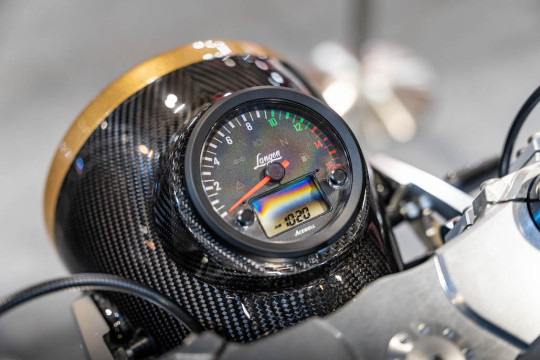
Read the full article
0 notes
Text
Ultimate Two Strokes - Shakey rides new Langen and his classic RGV250 motorbike - YouTube
Ultimate Two Strokes – Shakey rides new Langen and his classic RGV250 motorbike – YouTube
View On WordPress
0 notes
Link
2 notes
·
View notes
Text
WATCH: Langen Two Stroke gets a full power Dyno run
WATCH: Langen Two Stroke gets a full power Dyno run
Continue reading
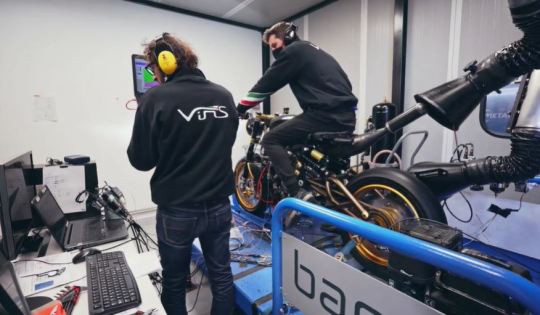
View On WordPress
0 notes
Text
Allulose Market Size, Trends, Shares, Insights and Forecast – 2026
Allulose is a sweetener that offers the taste and texture of sugar and has 90 percent fewer calories in comparison to other sweeteners. Due to its unique oxygen and hydrogen structures, allulose's composition is very similar to fructose and glucose. This slight contrast permits the sugar substitute to replace about an adequate amount of table sugar while maintaining the sweetness level up to 70 percent.
Increasing demand for processed frozen food, bakery, and confectionery product is expected to drive the growth of allulose market along with increasing diabetic patient and growing healthcare awareness are fueling the growth for low-fat food products like allulose in global market. Moreover, increasing the working population in urban areas and growing demand for ready to eat food in countries like India and China is expected to drive the allulose market in Asia Pacific region.
Request for Sample Copy of this Report: https://www.coherentmarketinsights.com/insight/request-sample/492
Allulose is required to maintain the blood glucose level, which helps to decrease body weight while other sweeteners adversely influence blood glucose level and cause obesity, which helps it to gain significant traction in the global market.
Allulose Market Outlook – Shifting preference of Consumers towards Low Calorie Sweeteners in Asia-Pacific has Propelled Demand for Allulose
Asia Pacific is the largest contributor with a highest share for allulose market, owing to major shifts in dietary patterns, diversified diets, increasing healthcare awareness, and nutritional transition.
Japanese starch and dietary fiber organization also known as Matsutani Chemical Industry Co. Ltd. is mainly focusing on the advancement of the allulose, and utilizing it as a low-calorie sweetener, since from last two decades.
Allulose Market Outlook – Advancement in Healthcare and Medical Sector
Huge components boosting the global allulose market comprises of decreasing in spending on healthcare services, rising government activities to enhance healthcare services, transparency of information to patients and advancement in technology.
Healthcare services provider mainly focusses on cloud-based healthcare services framework and value based solution, along with medical services, healthcare and medical products, development of online networking, and increasing number of diabetic patient which is expected to fuel the allulose market.
Allulose Market Outlook – Government policies & Other Aspects is expected to Fuel the Growth for Allulose in Global Market
According to National Center for Biotechnology Information (NCBI) – the policies of trade liberalization suggest that urbanization over the past two decades have implications for increasing rates of obesity and chronic diseases such as cardiovascular disease and also cancer. Moreover, growing urbanization and increasing working population is propelling the growth of allulose market. According to National Center for Biotechnology Information - Allulose supplements normalizes the body weight by regulation the human body metabolism which is beneficial for obesity-related problems.
Allulose are produced from corn fructose starch which adversely affect health and also posses’ grave danger who have allergic reactions and gastrointestinal side effects. Overweight and obesity causes high blood pressure, heart disease, liver disease, stroke, and osteoarthritis which drives the allulose industry because of rising health concerns of the consumers.
For More Information: https://www.coherentmarketinsights.com/ongoing-insight/allulose-market-492
Key Developments:
Several government administrations are recognizing allulose as a nutrition product in food and beverages application. For instance, in April 2019, the U.S Food & Drug Administration (FDA) had published a draft guidance allowing allulose to be included in the carbohydrate line of the Nutrition Fact Panel rather than the ‘Added Sugar’ and ‘Sugar’ line of the Nutrition Facts Panel. This will permit the food & beverages manufactures in the U.S. to deliver products with lower calories and sugar by incorporating allulose in their products.
Various companies are focusing on developing large scale production processes of allulose in order to strengthen their foothold in the global market. For instance, in June 2018, Savanna Ingredients, a German start-up owned by Pfeifer & Langen IHKG had developed a process for large scale manufacturing of allulose from sugar beets, using enzymes derived from nature.
Moreover, in September 2019, Blue California, a South California based ingredients manufacturer, announced commercialization of their natural rare sugar allulose produced from natural substrates using a patented bioconversion technology to manufacture a natural and non-GMO sweetener.
0 notes
Photo

The quite stunning Langen Two Stroke... • • #salonprive #concours #concoursdelegance #blenheimpalace #classiccars #carshow #vintagecars #classiccar #carbon #countryhouse #statelyhome #racecar #weldporn #bikes #motorcycles #motorbikes #langen #langentwostroke #langen2stroke #2stroke #twostroke #stroker #vtwin #vins #madeinbritain #moveyoursoul #braaap (at Salon Privé) https://www.instagram.com/p/CFflCkSh6Q1/?igshid=jqgvuaplzpnp
#salonprive#concours#concoursdelegance#blenheimpalace#classiccars#carshow#vintagecars#classiccar#carbon#countryhouse#statelyhome#racecar#weldporn#bikes#motorcycles#motorbikes#langen#langentwostroke#langen2stroke#2stroke#twostroke#stroker#vtwin#vins#madeinbritain#moveyoursoul#braaap
0 notes
Photo

CHRISTOFER RATCLIFFE DA LANGEN MOTORCYCLES REVIVE OS MOTORES DE DOIS TEMPOS DENTRO DAS LEIS CONTRA EMISSÕES ••• #piloto_preferencial #acimados60 #pitacosdovovô #informa #doistempos ••• Fonte : https://www.returnofthecaferacers.com/workshop-interview/langen-two-stroke/?mc_cid=54dbcbcb22&mc_eid=6149ca28c7 https://www.instagram.com/p/CFQBnf0ppgT/?igshid=ijfe8ej1xhe7
0 notes
Text
Langen Motorcycles unveils the first two bespoke customer machines


Langen Motorcycles unveils the first two bespoke customer machines at Motorcycle Live - NEC Birmingham.
Langen Technology Limited (Langen), one of the leading automotive engineering and development companies specialising in low volume motorcycles, is today unveiling the very first customer two stroke 250cc V-twin machines. The keys will be handed over to the lucky new owners at the start of the Motorcycle Live exhibition at the NEC.
In a specially orchestrated ceremony, the founder of Langen, Christofer Ratcliffe, will greet the new owners and provide a short presentation on the customisation process of each machine. Chris will then be available for a short Q&A session on the stand.
The two customer motorcycles will remain on display on the Langen stand 3E25 in Hall 3A at the NEC between the 19th and 27th December. A range of two stroke bikes from the 80’s and 90’s will also be exhibited.
The Langen team will be joined by IRRC SBK Champion and Ex 125 & Moto3 GP Rider Danny Webb to give his account of how the Langen Two Stroke performs on track.
What makes this motorcycle unique is the intoxicating 250cc V-twin engine combined with the focus on simplicity, the reduction in weight using modern technology and materials, along with the use of components of the highest quality. Modern design meets Great British traditional craftsmanship.

Being born as a side project in the Ferrari factory, the first version of the V-Twin was realised in 2014 by Vincenzo Mattia as a brutal GP race engine delivering 95bhp. The patented fuel injection and ECU controlled lubrication system have enabled Langen and Vins to develop the purebred V-Twin into a durable, controllable engine which meets modern emissions regulations. The well-mannered power delivery allows a predictable ride with endless, addictive torque on tap. Take the needle upwards of 9,000 rpm for an experience like nothing else on the road.
Drawing on a wealth of experience and expertise, Langen pride themselves on producing a whole motorcycle package which can not only contend on the race-track but also provides a confidence inspiring and unequalled ride on the road. Langen’s specialism echoes the great Colin Chapman “simplify then add lightness”. Relentless design, testing and optimisation of every component and system on the bike enables the Two Stroke to weigh in at an incredible 120kg translating to over 600bhp/tonne. The aluminium space-frame chassis provides the optimum stiffness, weight and geometry to give incredible cornering speeds, change of direction along with reassuring stability at 130mph.

Christofer Ratcliffe Founder and CEO of Langen comments: “ At Langen we believe that “cars move the body yet motorcycles move the soul” - it demonstrates the intangible and unmatched human experience of riding and owning a Langen. The whole team at Langen are excited to hand over the first two bikes, like all automotive businesses we have had our own issues with components and supply-chain and coupled with COVID-19 this moment has been a long time in the making; however the best things come to those that wait and our first customers cannot wait to throw a leg over these bikes and reap the rewards of the hundreds of man hours that have gone in to each machine - they are now ready to be enjoyed.”
Discover more at: https://www.langenmotorcycles.co.uk/
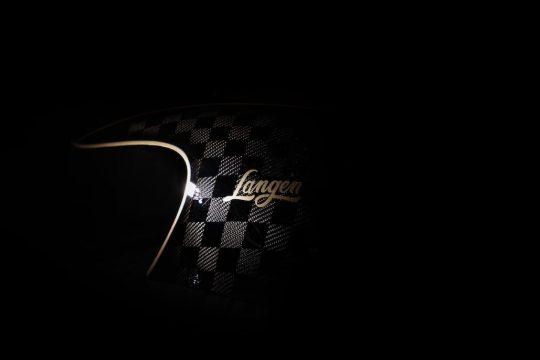
Read the full article
0 notes
Photo
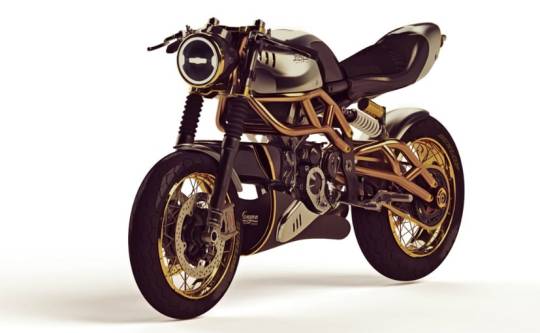
British Brand Langen Motorcycles Introduces Two-Stroke Pocket Rocket - carandbike #autonews #brand #british #carandbike #introduces #langen #langenmotorcycles #langentwo-stroke #langentwo-strokemotorcycle #motorcycles #news #pocket #rocket #twostroke
0 notes
Text
British Brand Langen Motorcycles Introduces Two-Stroke Pocket Rocket
British Brand Langen Motorcycles Introduces Two-Stroke Pocket Rocket
The Langer two-stroke motorcycle uses a 250 cc engine with 80 bhp power and 45 Nm of torque with a kerb weight of just 112 kg!
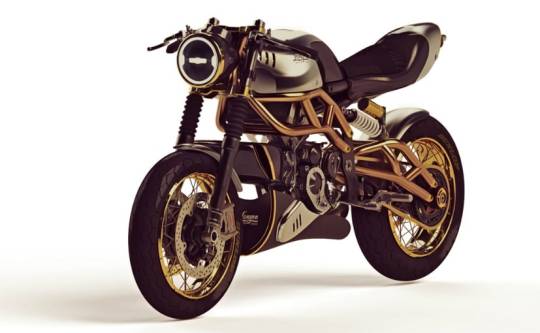
View Photos
The Langen two-stroke uses a fuel-injected 250 cc two-stroke engine
Langen has introduced an ultra exclusive two-stroke motorcycle, which seems to be a part sportbike, and part cafe racer,…
View On WordPress
0 notes
Text
A British Company Is Building An Brand New, 113kg Two-Stroke Sportsbike
Langen Motorcycles' 250 sports bike promises a modern take on classic two-stroke sportsbikes

from Car Throttle https://www.carthrottle.com/post/a-british-company-is-building-an-brand-new-113kg-two-stroke-sportsbike/?utm_source=carthrottle-rssfeed&utm_medium=rss
via Car Throttle
from Blogger http://jeffrey2garner.blogspot.com/2020/07/a-british-company-is-building-brand-new.html
via IFTTT
0 notes